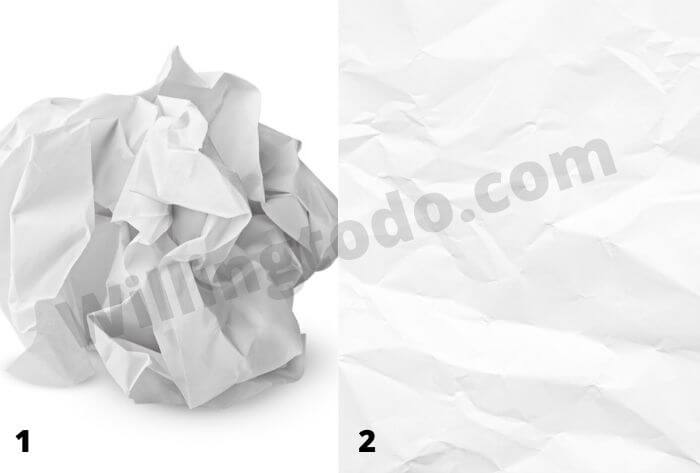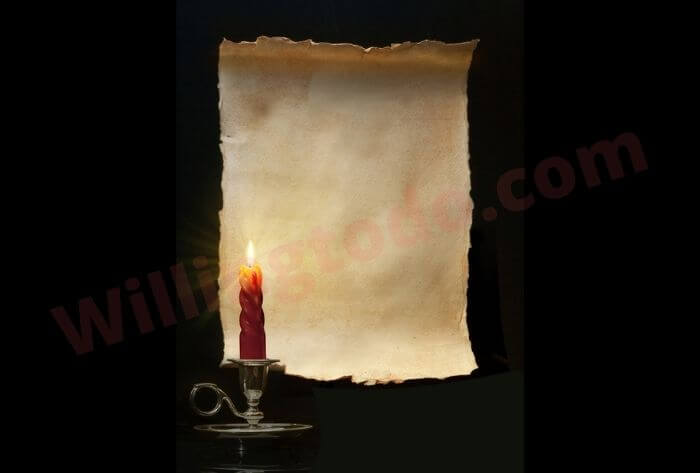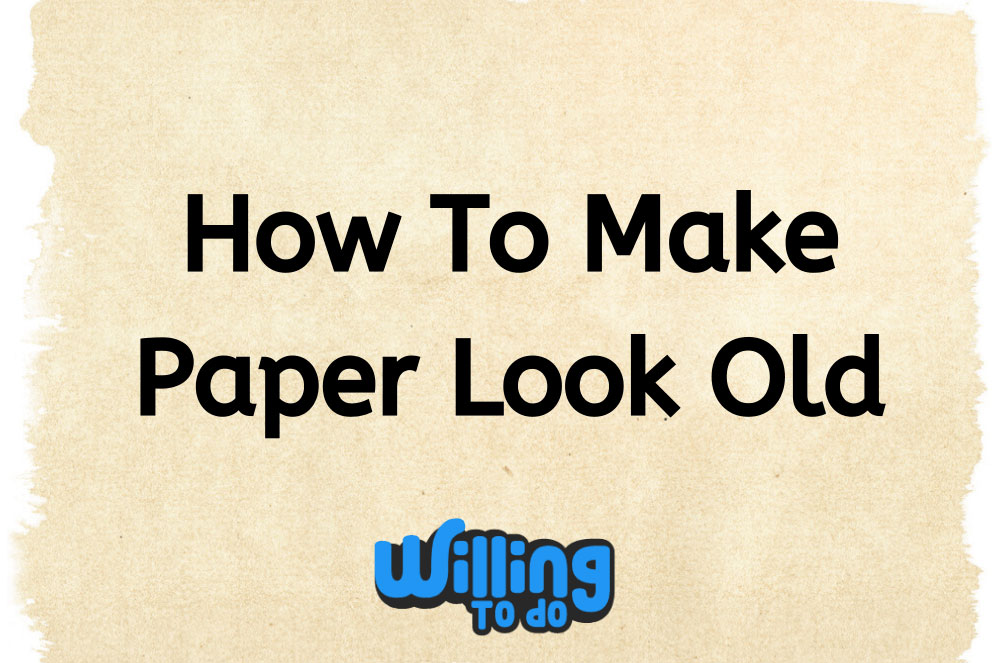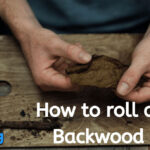Paper is an essential tool for a variety of projects, whether it’s adding a vintage touch to an art piece, enhancing the appeal of a poem, or giving a history project an antique feel. But do you know how to make paper look old? Aging paper can transform its appearance, adding character and depth to your work.
If you’re wondering how to make paper look old, you’ll find that the internet is full of techniques. Among the most popular is crumpling and spritzing the paper. However, if that doesn’t achieve the desired effect, you can try other approaches like staining and baking, applying heat or flame, or even burying the paper for an ancient, worn-out look.
That classic, weathered, brownish hue on crumpled paper evokes a sense of tradition, making the paper seem like it’s withstood the test of time. This method is especially useful for those who enjoy creating vintage designs, crafting personalized greeting cards, or preserving personal or family history through scrapbooking.

The nostalgic appeal of an aged manuscript can transport you back in time, invoking memories of Celtic parchment, Egyptian papyrus, or Chinese rice paper. And while these historical papers are long gone, you can recreate their distinctive look and smell using simple, affordable methods.
Let’s explore some effective techniques on how to make paper look old using everyday items, most of which you can easily find in your kitchen or around your home.
Pointers on how to make paper look old
There are countless methods to achieve an antique effect, but here are some of the most accessible and effective techniques you can try. These methods use common household materials to create that aged, weathered paper look.
1) Walnut ink
One traditional way to achieve an aged look is by using walnut ink, which is made from black walnuts. You can find walnut ink in crystallized form that you hydrate before use. Simply brush the ink over your paper, fabric, lace, or other materials. You can experiment with different effects by varying the application to get the perfect weathered look.
2) Lemon or Lime
For a burned, aged effect, you can use lemon or lime juice combined with heat. Drip the juice along the paper’s edges and then apply heat with a heat gun or hair dryer. As the heat works on the juice, the burn marks will deepen, creating a distressed, old-time appearance.
3) Paper burning
Another common technique for making paper look old is to singe the edges. Use incense, a candle, or a lighter to gently burn the paper’s edges. Be sure to pinch the burnt areas to give the paper an even more authentic, worn look. To prevent the fire from spreading beyond the borders, wet the inner part of the paper with a Q-tip or a damp finger. This method offers a controlled way to ensure the paper has just the right amount of charring without destroying the whole sheet.
4) Paper sanding
Using sandpaper to roughen the surface of your paper can give it a frayed, distressed look. Sand the paper gently, in a straight motion (not circular), much like you would sand wood. This technique adds texture and gives the paper a unique, aged appearance.
5) Paper tearing
Instead of cutting the paper, try tearing it to create a jagged, uneven edge. By holding the paper at different angles as you tear it, you can achieve a variety of effects. To enhance the aged look, color the torn edges with chalk, tea, coffee, or walnut ink.
6) Candle waxing
For a cracked, antique appearance, you can rub a white candle over the paper, covering as much surface as possible. Once the wax is applied, crumble the paper to create random cracks. Afterward, paint the paper, then iron it between two paper towels to remove the wax and reveal the aged effect beneath.
7) Paper crumbling
An easy way to add character to your paper is by crumpling it. Roll the paper into a ball, flatten it, and repeat the process several times. For an even more unique look, wet the paper slightly before crumpling, and finish the process by ironing the paper flat. This method gives a weathered, well-worn texture.
8) Paper Selection
Choosing the right type of paper is crucial for achieving the desired look. Standard printer paper tends to repel stains, resulting in a pale, less dramatic effect. For better results, opt for watercolor or blotting paper, which absorbs liquids like tea and coffee more effectively. Heavier textured paper from drawing pads is also a great choice when aging paper.
Methods of how to make a paper look old
When considering how to make paper look old, there are several tried-and-true methods. Below, we’ll walk you through the crumpling and spritzing method, the staining and baking method, the flame and heat method, the mud method, and the tea staining method.
How to Make Paper Look Old by Crumpling and Spritzing Method

Step One: Take a sheet of paper and crumple it into a ball. The more you squeeze the ball, the more creases your paper will have
Step Two: Uncrumple the paper and spray it with water, tea, or coffee. After uncrumpling the paper sheet, fill a spray bottle with your desired liquid. Then, spray the paper until the created spots and lines to be colored are damp.
The liquid will give the paper a different look. Water won’t color the paper but will enable further changes. Tea will give a faint brown color, whereas coffee will give the sheet a darker color.
Step Three: Now that the paper is damp, it will be easier to shape it. Tear off edges, create small circles with your fingernail, or tiny wrinkles. The paper’s damage should be of different shapes and sizes, the older you want the paper to look, the more damage you need to incorporate.
Step Four: Time to air dry the paper. Place the paper sheet on a smooth surface, such as a marble slab or table, and let it dry. You can use a hairdryer to speed up this process.
How to make paper look old by using the Staining and Baking Methods
You can make great antique parchment manuscripts for your homeschooling crafts by using tea or coffee stains. Follow the steps to learn How to make paper look old.
Step One: To age the paper, you can choose coffee for a darker color or tea for a lighter color. The strength of the color depends on how much the coffee and tea are brewed. Before moving on to the next step let the liquid cool.
Step Two: Position the paper on a baking or cookie tray. The paper should fit inside the tray easily.
Step Three: Preheat the oven to 200ºF or 90ºC
Step Four: Pour the liquid onto the baking tray. Pour the liquid from the corner of the baking tray, not directly over the paper. Pour as much liquid to cover the paper with a thin film.
Step Five: Use a sponge brush to spread the coffee/tea liquid. You can be creative with the designs you create. You can spread the coffee/tea liquid evenly around the tray if you want a more uniform look. Otherwise, you can spread it irregularly to create more bright patterns. You can also sprinkle dry coffee on the paper to create spotty patterns.
Step Six: The paper should not be swimming in the coffee/tea liquid. Just make sure there is no unabsorbed liquid in the tray.
Step Seven: At this point, before you put the tray inside the oven you can add a few touches to make the paper look even older. You can create imprints with a fork, tear the paper, or make small holes with your fingernails.
Step Eight: Put the paper tray on the middle rack of the oven. Once the edges of the paper start to curl up the process is complete.
Step Nine: Remove the paper tray from the oven. Give the paper tray 10 to 15 minutes to cool down. These are the steps on How to make paper look old.
How to make paper look old by Flame and Heat Method

Step One: Always perform this method of flame and heat near a sink, in case you accidentally light the paper on fire. In the flame and heat process, the text on the paper should be written after the aging process to avoid losing some of the material due to the burning of the paper.
Step Two: Use a candle or lighter for How to make paper look old. Use whatever is available to you. Shun uses a butane lighter as the flame is too strong for this type of work.
Step Three: Move the flame along the paper’s edges. The flame should be at least one inch below the edges of the paper Keeping the paper still move the flame along the edges, going back and forth along the perimeter of the paper. After the process is complete the paper will give the impression as if it has been around for a very long time and has been damaged by time and weather.
Step Four: To know how to make paper look old, burn small spots into the paper. Be careful not to burn the paper by keeping the flame at least an inch below the paper. Once the spots reach the desired brown or black color, remove the flame.
How to make paper look old with the mud method
Step One: Dig a hole in your patio. This hole should be just deep enough to fit a tennis ball.
Step Two: Crumple the paper into a ball and put it inside the hole. Sprinkle the crumpled paper with a bit of water. Before covering it with mud, smudge the paper with dirt
Step Three: Finally, cover the hole with dirt. Make sure the paper is deep enough and completely covered. The heat, dirt, and water will wear out the paper over time,
Step Four: Retrieve the paper after three to 10 days. The longer you keep the paper inside the soil the more aged it will look.
How to make paper look old with tea
Step One: Prepare the tea. Boil water and steep 3-5 tea bags for about 10 minutes to create a strong, dark tea.
Step Two: Crumple the paper. Gently crumple the paper into a loose ball and then flatten it out to give it a wrinkled, aged texture.
Step Three: Stain the paper. Place the flattened paper on a baking sheet or a flat surface covered with newspaper. Use a brush or sponge to apply the brewed tea evenly across the paper, ensuring it soaks in well.
Step Four: Dry the paper. Let the tea-stained paper air dry or use a hairdryer for quicker results. For added aging, you can sprinkle some tea leaves over the wet paper.
Step Five: Enhance the aged look. Once the paper is dry, you can gently tear the edges and use a lighter or match to carefully singe the corners, giving it an authentic, aged appearance. Follow these steps if you don’t know How to make paper look old with tea.







